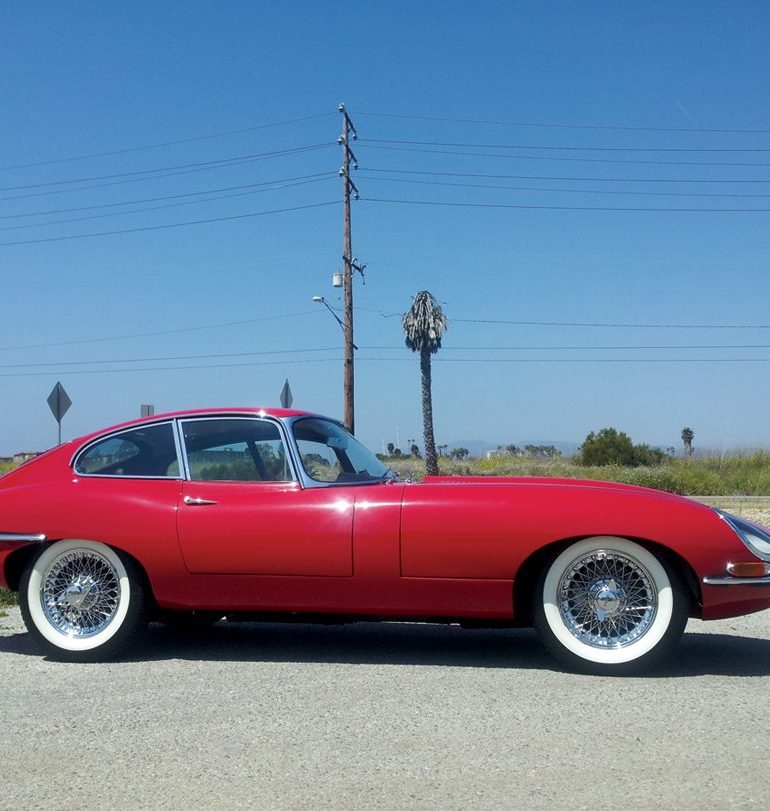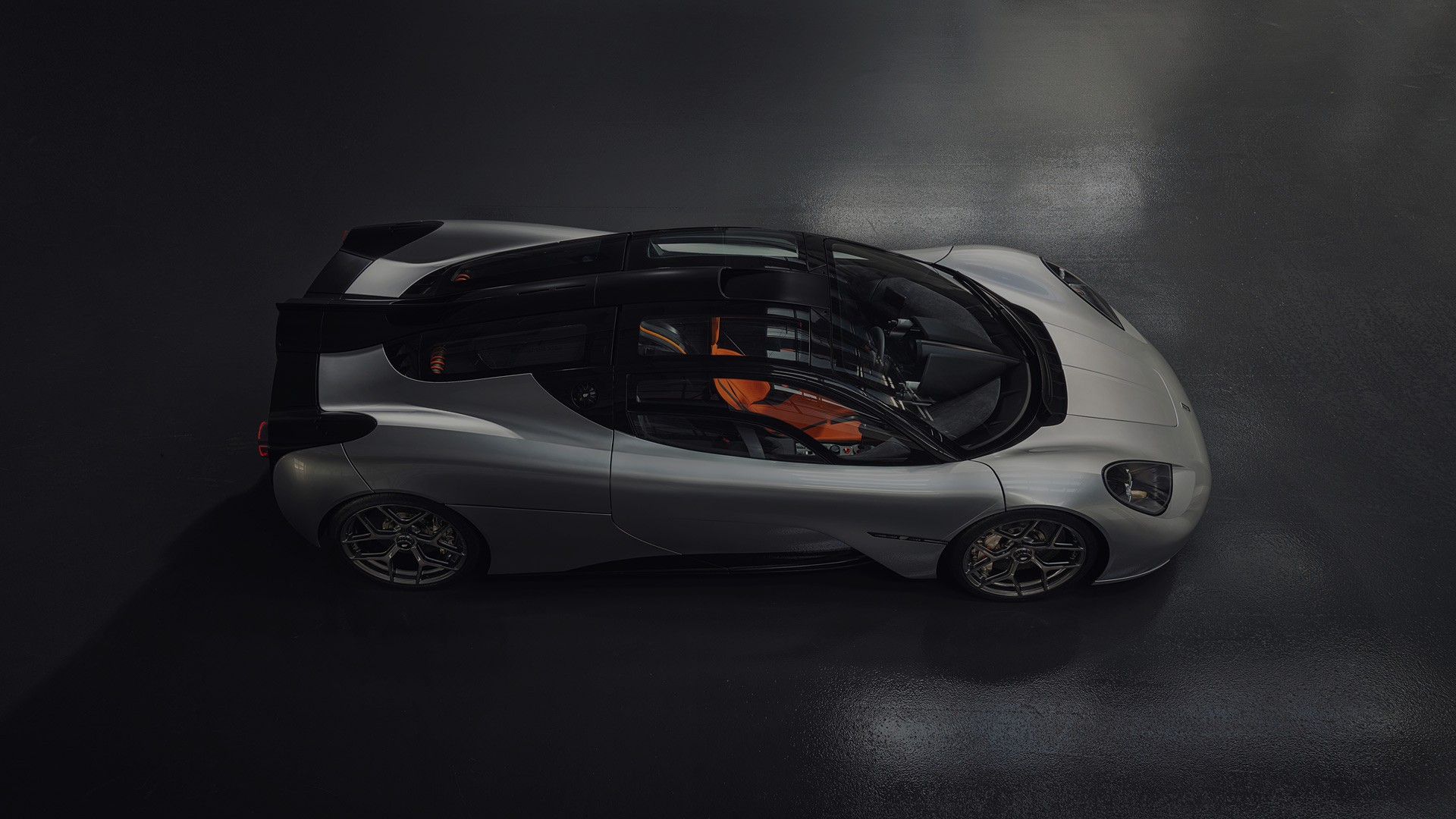On July 18, 1955, an entertainment icon was established when Walt Disney opened the gates to his unique vision of an amusement park for all ages—Disneyland. Some will remember that in those early days, visitors needed tickets to experience the various rides and attractions. The more subdued rides might call for an “A” or “B” ticket, but the most thrilling rides—the ones everyone wanted to experience—required the best and most valuable ticket—an “E” ticket. While Disneyland introduced the concept of the E-ticket to the general public, Jaguar was introducing its own version of a thrill ride for automotive enthusiasts.
The 1950s were halcyon days for Jaguar. With postwar demand for sports cars reaching record levels, Jaguar’s iconic XK120 two-seater quickly became a must-have amongst the American and European “sporty car” set. Alongside success in the showrooms, the decade also marked a period of near total domination by Jaguar in endurance racing, including 24 Hours of Le Mans victories in 1951, 1953, 1955, 1956 & 1957. Continued success on the track was becoming more difficult to achieve in the face of more technologically advanced competitors and the iconic XK range was beginning to look dated compared to products from Aston Martin, Ferrari, Maserati, Mercedes-Benz and Porsche.
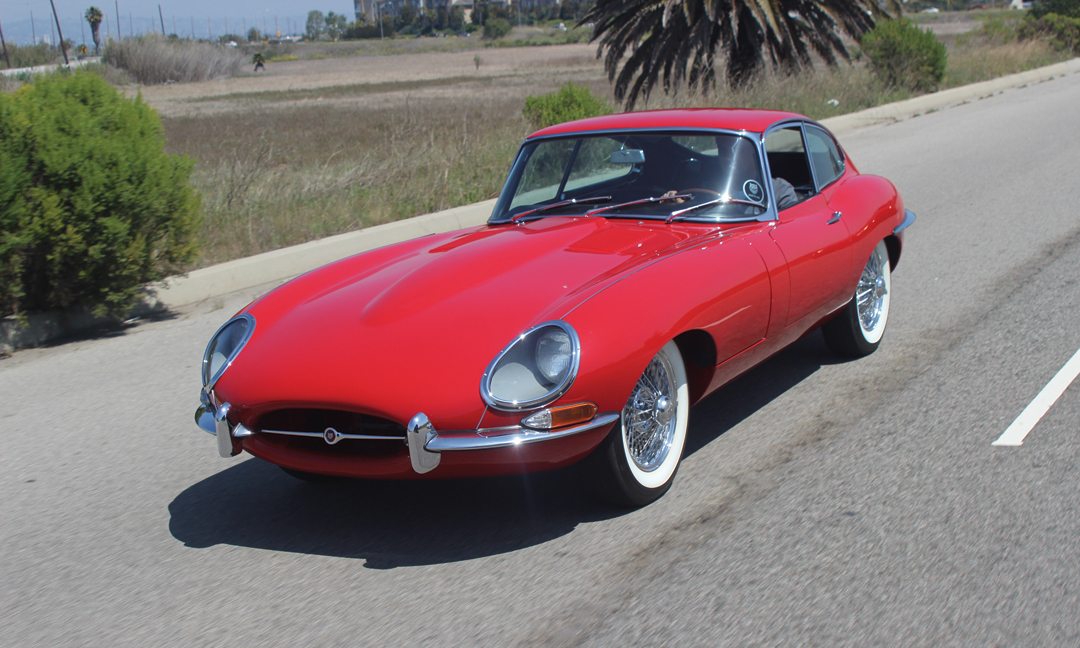
It was the beautifully sleek profile over advanced mechanicals that would cement the E-Type’s reputation as an automotive hallmark. It was the equivalent of finding out that the supermodel for which you’ve pined was also an honors graduate with an affinity for small animals, children and charitable works. The new Jaguar would forever mark the transition from the conservative fifties into the sexy sixties and prepare the world for Ursula Andress, Brigitte Bardot and Raquel Welch. Following its launch at the 1961 Geneva Motor Show, Enzo Ferrari proclaimed the new cat as “The most beautiful car ever made” and, in time, would grace the Museum of Modern Art in New York and sit atop the list of the “100 Most Beautiful Cars of All Time.”
What was truly incredible about the car was not the curvaceous body, nor the world-class suspension, but the fact that it was downright affordable when compared to its peers – at less than half the cost of the Aston Martin DB4 GT you got better performance and handling (it was almost like that supermodel asking you to take her out for fast food). Within four months after its debut at Geneva, the Jaguar E-Type was available for purchase in roadster and coupe variants and capable of 150 mph (although few owners could replicate the feat) from its 3.8-liter twin camshaft engine that had more than proved its worth in competition.
The initial version of the car powered by the 3.8 sold briskly with 15,498 purchased in the three years following its launch. An enlarged 4.2 liter engine was introduced with the Series 1 with more torque, better brakes and a significantly improved gearbox that now featured synchromesh on all forward gears. A 2+2 variant followed in 1966 boasting rear jump seats and an available automatic transmission to go along with its greater length.
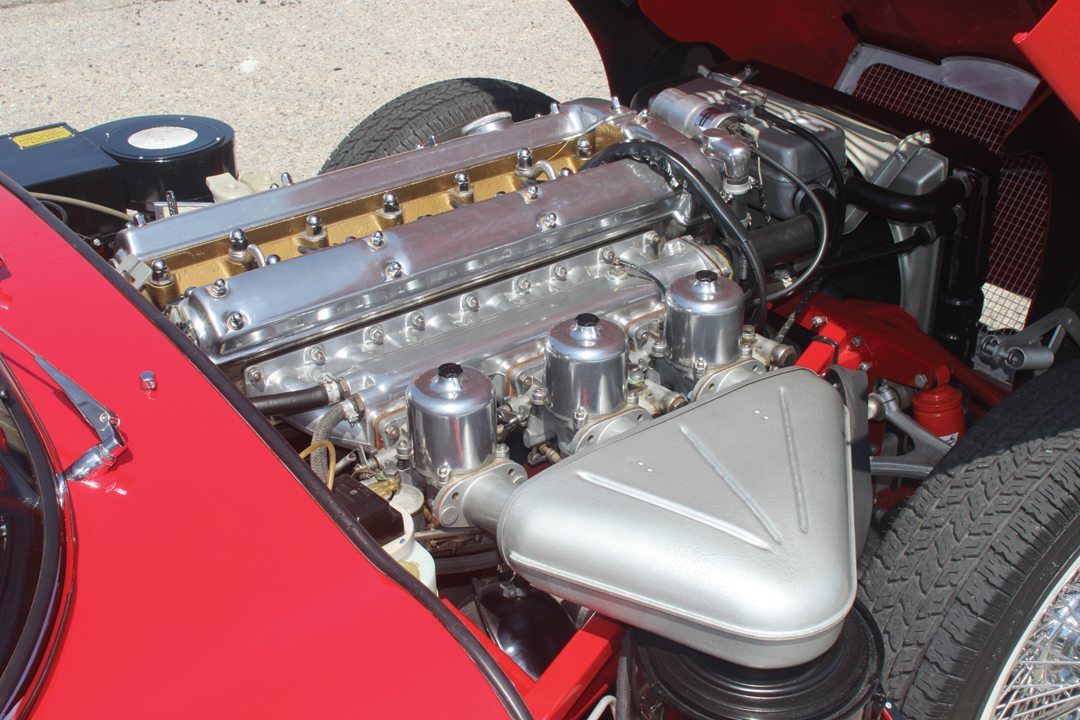
The Series 2 was sold from 1969 to 1971 and adopted many of the features unveiled on its immediate predecessor plus larger and higher bumpers and turn indicators. The brake lights went from delicate to garish (and moved below the rear bumper) and the mouth opening was increased in size to assist in engine cooling (helped by supplemental fans) while fragile Americans were protected by the replacement of the toggles with rocker-style dash switches. Brakes continued to improve while air conditioning and power steering were newly available from the factory. While emissions controls and added weight hampered performance the car continued to resonate with buyers (with 18,809 Series 2 cars sold).
To offset the loss in performance dictated by compliance with federal regulations, Jaguar responded with a new 5.3 liter V-12 in 1971. The new engine added only 80 pounds to the car and boasted excellent acceleration, refinement and torque. What it added in these qualities, however, detracted from the essential nature of the car which grew softer and luxurious with each passing year and foretold the coming of the XJ-S in 1975.
More than 50 years after its debut, the E-Type retains its visceral sensuality and the shape is as compelling now as then. The 1966 Series 1 before us is as pristine as any in the country and was subject to a complete restoration using a California-owned example as its base. As usable and iconic as the roadster remains in the mind’s eye, the coupe is the shape that Sayer first penned and is the purist distillation of the form. It is at once feminine and phallic and is the embodiment of the sexually liberated decade of its birth.
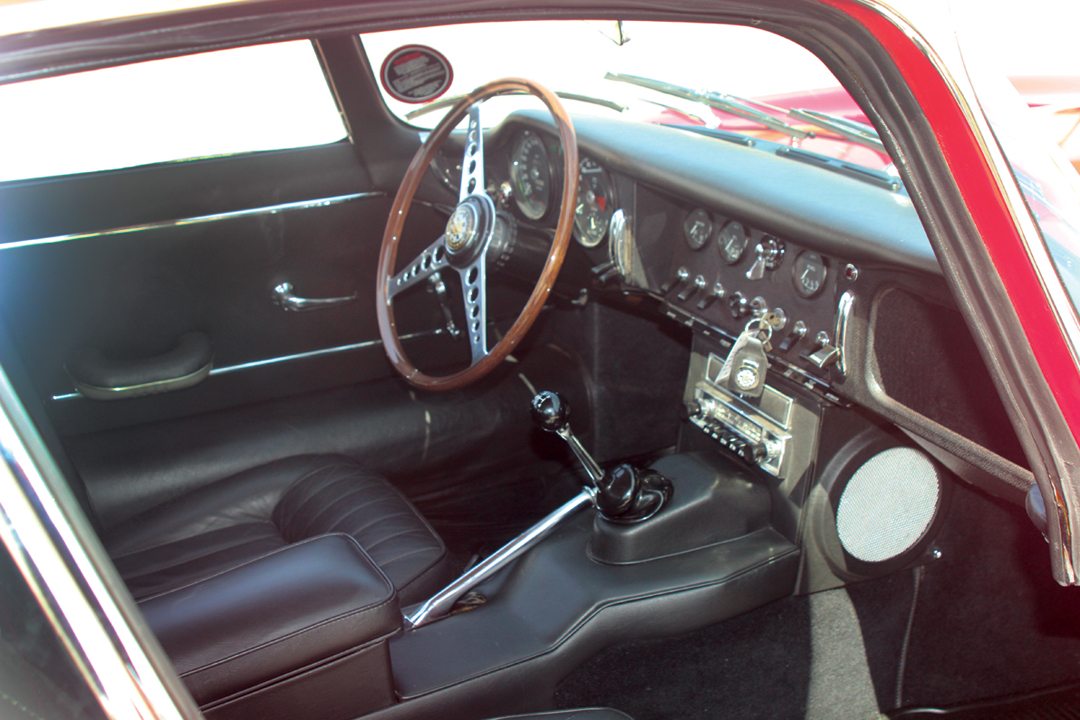
The gearbox is familiar to anyone that has spent any time in British cars with its long handle and positive throws, the transmission allows for quick shifts and well-spaced ratios. The clutch pedal is firm but easy to depress and the pedals are well spaced to allow for heel and toe operation. The brakes are as good as any offered during the period and the pedal operates with servo assistance that allows for firm (rather than excessive) pressure. The braking is progressive and neither overwhelms the suspension in hard use nor fades from repeated stopping.
The steering wheel is (like the rest of the car) beautiful but is somewhat heavy in traffic. At speed the effort to control the car is almost perfect and it is easy to see the gauges through the wheel and the transmission lever is easily within reach. The performance of the car remains exceptional even when compared with modern commuters that can match its statistics.
The E-Type is the classic that can be driven anywhere at anytime (especially in coupe form) and rewards the driver with exceptional performance today rather than reminding us of how much has changed. The car not only keeps up with traffic but accelerates away from it and handles as well as one could hope for while riding on narrow tires with wire wheels. It never feels twitchy in transition and feels benign at the limits which most drivers will explore.
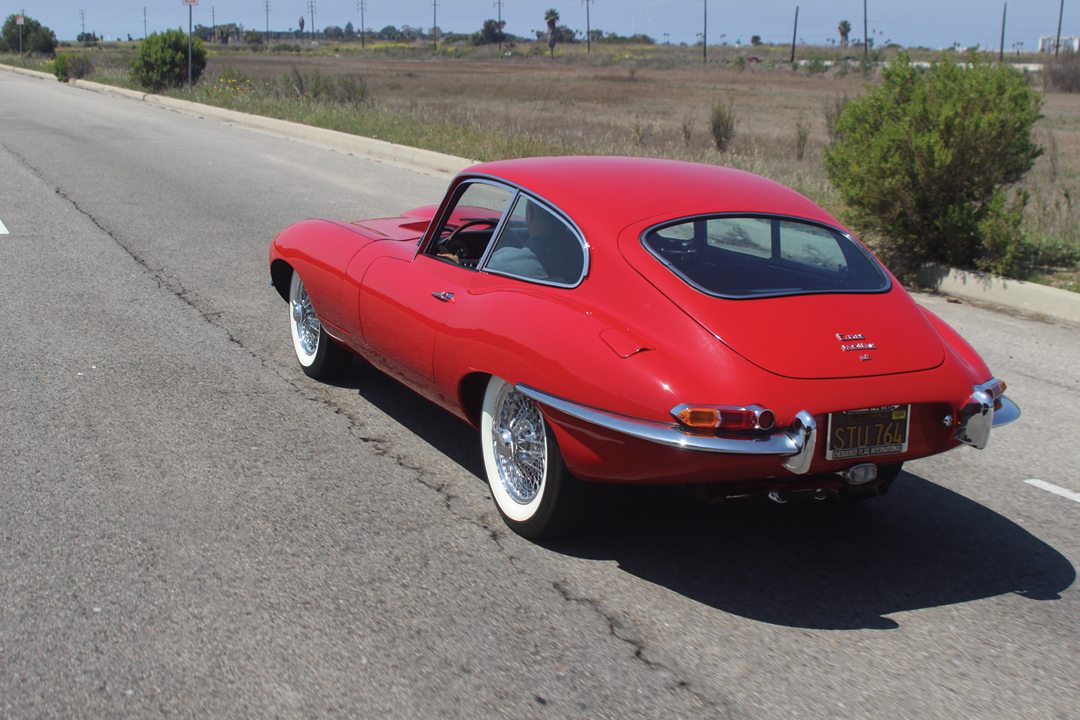
Driven Classics at a Glance:
SPECIFICATIONS
1966 Jaguar E-Type FHC
Engine
Chrome-iron cylinder block with dry liners and aluminum cylinder head with twin overhead camshafts. Alloy pistons and steel connecting rods and a seven-bearing crankshaft.
Capacity: 4,235 cc
Bore & Stroke: 92.07 mm x 106 mm
Compression Ratio: 9:1 (8:1 available)
Maximum Power: 265 bhp @ 5,400 rpm
Maximum Torque: 283 ft/lbs @ 4,000 rpm
Transmission
Gearbox: Four-speed synchromesh manual or Borg Warner Model 8 automatic transmission
Rear Axle: Salisbury hypoid limited slip mounted within rear suspension subframe
Suspension
Front: Independent. Transverse wishbones, torsion bars with telescopic shock absorbers and antiroll bars to lower wishbones. Rear: Independent. Lower transverse tubular links, pivoted at wheel carriers and subframe. Twin coil springs per side with telescopic shock absorbers.
Steering: Rack and Pinion
Dimensions
Length: 14 feet 7 5/16 inches
Width: 5 feet 6 inches
Height: 4 feet ¼ inches
Weight: 2,900 lbs
PERFORMANCE
Top Speed 150 mph
0-60 mph 7 seconds
Standing ¼ Mile 14.9 seconds
Average Fuel Consumption:
18.5 mpg
VALUATION
Price at launch: $5,685
Price (excellent): $97,000
Price (good): $84,700
Price (average): $61,000
Price (project): $44,800


